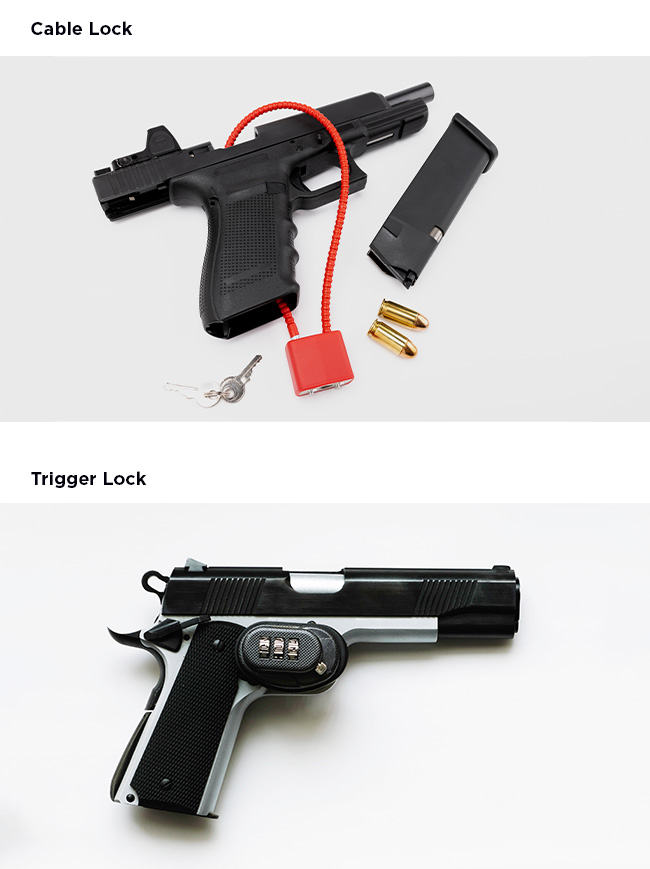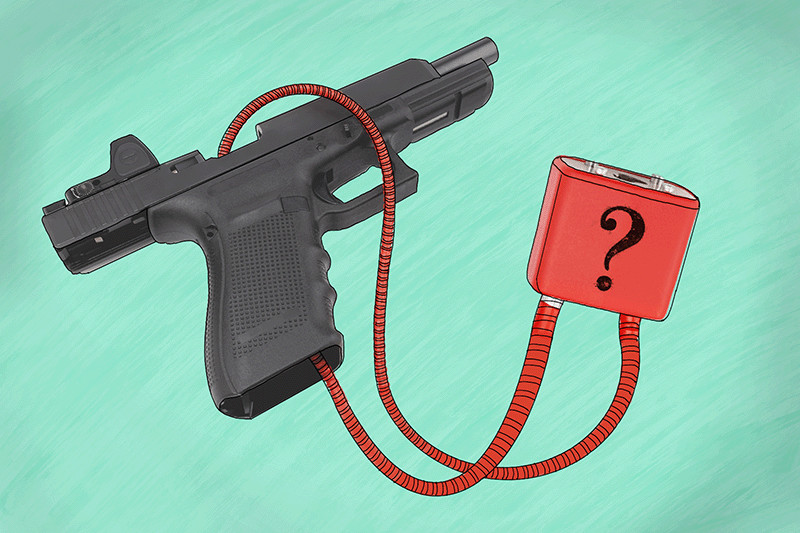Last year, I was fortunate to have the opportunity to write a blog post for the Regional Gun Violence Research Consortium discussing what we know about risk factors for and methods of preventing firearm suicide. In that post, I discussed why firearms play such a disproportionate role in American suicide, which communities are most heavily impacted by these tragedies, and what tools exist for us to prevent firearm suicide. I was once again offered the opportunity to honor National Suicide Prevention Month by writing a blog post on this topic and I would like to take the opportunity to provide updates on what was discussed last year.
The Shifting Nature of Risk
To be certain, middle-aged and older-adult white men still represent a substantial majority of firearm suicide deaths in the US. That said, new data released by the CDC and analyzed by researchers at Johns Hopkins University indicate that, for the first time ever, Black teens are dying by firearm suicide at a rate higher than their white teenaged peers. Any single-year shift should be interpreted with caution, but there are plenty of reasons to believe that this truly represents a surging risk among Black teens. One possibility that might explain this shift is that the demographics of firearm ownership are changing. Beginning in early 2020, an unprecedented surge in firearm sales took place across the United States. Importantly, researchers noted that 50 percent of first-time firearm purchasers in and around this time identified as female, 20 percent as Black, and 20 percent as Latinx.
For the first time ever, Black teens are dying by firearm suicide at a rate higher than their white teenaged peers.
It may very well be that Black individuals are representing an increasing percentage of firearm owners and that the patterns of firearm purchasing align dangerously with patterns of suicidal thoughts. Adding credence to this possibility is a set of findings from my own research team at the New Jersey Gun Violence Research Center (NJGVRC), showing that individuals who purchased firearms during the purchasing surge—particularly if it was their first-ever firearm purchase—are more likely than anyone else to have experienced suicidal thoughts in their lifetime, in the past year, or even just in the past month. This means that firearms are frequently entering the homes of individuals with a propensity to think about suicide and, at an increasing rate, those homes are inhabited by individuals who identify as Black.
NJGVRC recently collected data from a large nationally representative sample of Black adults. In the coming months, we intend to examine to what extent Black individuals who purchased firearms at various points in time have experienced suicidal thoughts at elevated rates and store their firearms less securely. Our findings from those analyses may help us understand risky patterns of behavior and identify specific communities we must reach with messaging that promotes secure firearm storage within the home and storage away from home during times of stress.
Messaging on Secure Firearm Storage as a Method To Prevent Suicide
Reaching communities and promoting behavior change related to firearms can be difficult and, as I discussed in my blog post last year, not every individual wants to hear from the same voice on issues like secure storage. In several studies, we have identified law enforcement, military servicemembers, and military veterans as preferred messengers on this topic; however, the prior work we cited has relied entirely upon self-report surveys to assess this issue.
More recently, my team examined the question of how best to message on secure firearm storage for suicide prevention through an experimental design. Specifically, we recruited a national sample of firearm-owning servicemembers—active duty, Reserves, and National Guard—and randomized them to view one of 12 different visual messages on secure firearm storage for suicide prevention. The visuals shared the same image of an airman storing a firearm in an armory and had the same base text promoting the utility of secure firearm storage, but varied on three domains: (1) the profession (security forces, combat controller, or primary care physician) of the messenger, (2) the inclusion (or absence) of text validating that firearm owners prioritize safety, and (3) the inclusion (or absence) of text that validates the drive for home protection, but notes that there are other methods to secure a home that carry less risk.
Regardless of what text was included in the overall message, conditions in which the message was voiced by security forces—a parallel for law enforcement within the military—generally saw greater increases in the willingness to adopt secure firearm storage practices. Although definitely not perfect, this more sophisticated experimental design adds confidence to our general set of findings highlighting law enforcement as a vital public voice in efforts to promote shifts in social norms on secure firearm storage. We are now in the process of examining how different aspects of an individual’s identity (e.g., gender, racial identity, rurality, political leanings) intersect with one another and align with different preferences with respect to messengers on this topic. As we come to better understand who wants to hear from whom, we can develop and disseminate messages with a better chance to persuade firearm owners across diverse communities to adopt secure firearm storage practices.
… law enforcement [is] a vital public voice in efforts to promote shifts in social norms on secure firearm storage.
Understanding the Market for Secure Storage Options
My team has been fortunate to receive funding from various arms of the Department of Defense in our efforts to better understand and prevent firearm suicide. In one such funded project—led by Emmy Betz and her team in Colorado—we gathered a nationally representative sample of firearm owners and asked two fundamentally basic questions with substantial implications for suicide prevention: (1) what types of locking devices are firearm owners currently using and what would prompt them to shift that pattern, and (2) what types of locking devices do firearm owners actually want?
Generally speaking, most legal firearm purchases come with a small locking device such as a trigger lock or a keyed cable lock and, in suicide prevention initiatives nationwide, it is extremely common for keyed cable locks to be distributed widely. My own team, in fact, distributed such locks in Project Safe Guard. In trying to create large-scale changes in secure storage practices, however, it seems important to have a sense of whether the options we are offering actually align with the wishes of the potential consumers of those products. If they do not, then our assessment of the market is off base and the likelihood of adoption by a substantial portion of the community we aim to help is dramatically lowered. Indeed, surveys have repeatedly shown that most firearm owners do not use these types of locks despite their inclusion in most sales.
Common Gun Locks

What Locking Devices Are Firearm Owners Currently Using?
In the research that addressed the first set of questions above, we utilized a new assessment of firearm storage, which included both images and text describing various lock options and also specified the type of locking mechanism (e.g., biometric vs key/dial/PIN). Troublingly, we found that 58.3 percent of the 2,152 firearm-owning adults stored at least one firearm unlocked and hidden somewhere it cannot be easily seen, while 17.9 percent reported storing at least one firearm both unlocked and out in the open. In other words, locking up all firearms is not standard practice among firearm owners nationwide, so ready access to the most lethal means of suicide is the norm. This is not groundbreaking information, but where we charted new territory was in our assessment of locking device use broken down by locking mechanism. What we found was that gun safes were the most frequently used type of locking device, whether the safes were biometric (15.6 percent) or key/dial/PIN-based (32.4 percent). The firearm owners in our study who did not lock their firearms most frequently noted reasons were that they believed they were unnecessary (49.3 percent) and feared that locks would prevent quick access in an emergency (44.8 percent). In terms of what would prompt them to lock up firearms currently stored unlocked, fear of access by a child was the most frequently endorsed motivation (48.5 percent).
What Locking Devices Do Firearm Owners Actually Prefer?
In the research that addressed the second question—what locking devices do firearm owners actually want—we found pragmatically useful but somewhat troubling information. Firearm owners noted that speed and ease of access, as well as the cost of the lock, were key considerations in terms of their preferences. They also listed the strength or security of the lock and compatibility with their firearms as important factors. We asked the participants to imagine being “at a community event and a nonpolitical group is giving out free firearm locking devices. You don’t need to provide your name or contact information to get a device.” We then presented them with the visual and text description of various locks and, when we asked which they would prefer, there was a fairly even split between those who chose a device that used a key/dial/PIN (40.9 percent) and those who chose a biometric device (41.9 percent). The remaining participants indicated they’d prefer a coupon towards the purchase of a gun safe, cabinet, or other large locking device, but the large majority of those individuals (80.0 percent) said the coupon would need to be for at least 25 percent off for it to be worth taking.
In terms of specific devices, biometric in-vehicle locks and key/dial/PIN trigger locks were the most frequently endorsed. The troubling aspect of these findings is that very few firearm owners indicated that cable locks were their preferred option. This finding did not surprise us and aligned well with our own anecdotal sense from working with firearm owners, but it highlights that one of the most common practices for preventing firearm suicide—distributing keyed cable locks—may be unlikely to have the intended impact because the product being offered does not align with the preferences of the intended market. As a suicide prevention community, we need to do a better job of listening to the individuals we aim to help and gearing our prevention efforts around the options most likely to take hold.
Take-Home Points
The general themes that have emerged over the past year center on two main points. It is important that assumptions are not made about what risk looks like, as firearm ownership and firearm suicide patterns are changing. Second, we need to continue to work with firearm owners directly—speaking with them and learning more about their perspectives—if we want our tools to have their intended effect.
Firearm suicide prevention cannot be an effort by non-firearm owners to change firearm owners. Rather, it needs to be a collaboration between those invested in suicide prevention and firearm-owning communities to ensure that the solutions offered are not only data-driven but also speak persuasively to and align with the values of the firearm-owning communities those solutions are intended to serve.
ABOUT THE AUTHOR
Michael Anestis is a clinical psychologist, the executive director of the New Jersey Gun Violence Research Center, an associate professor in the School of Public Health at Rutgers, and a member of the Regional Gun Violence Research Consortium.

